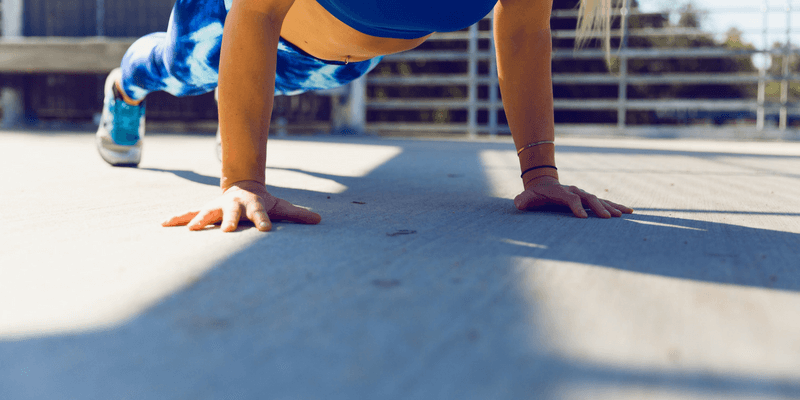There is A LOT of confusing information out there about what you can, can’t,
should and shouldn’t do when returning to exercise after having children. We caught up with Magdalena Hawley, the soon-to-be mother of two and founder of Mums Going Strong Fitness and Busy Fit Mums, to learn about five of the most common mistakes new mums make when returning to exercise post-birth.
Magdalena explains:
Most of the most common mistakes are all closely related. And to be honest, I was guilty of most of them.
1. Doing too much too soon
There is loads of pressure on new mums to get that pre-baby body back ASAP! That pressure isn’t just from TV or social media. We always complement people if they lose weight and say how good they look. New mums can be particularly sensitive about their bodies and want to look good, too. So as soon as they get a green light from the doctor to commence exercise (and scarily some mums don’t even wait for that), they want to train hard and get quick results and often don't think about all the changes their bodies went through during pregnancy and labour. Many mums don't stop to consider they might need more time to heal and ignore the fact that they should ease back into exercise gently. Saying that, it’s not always about losing that baby weight. Some mums, especially those who keep training during pregnancy, just want to get back into their normal routine so they don’t lose their fitness (this was me) or they just love the buzz they get from working out hard. Some feel exercise helps to keep them sane, maintains a bit of their sense of self or gives them that much needed “me” time mothers often lack. However, new mothers often have pelvic floor issues, abdominal separation, carpel tunnel issues, or back issues, and all of these issues need to be taken into account when returning to exercise post-birth. Similar to your energy levels, when you are sleep deprived and your body is trying to recover from birth, doing high intensity sessions might not be the best idea.
2. Skipping rehab exercises
If you had a knee surgery, you would do rehabilitation exercises after surgery before returning to things like running or heavy lifting, for example. Exactly the same principle applies post-birth. Our tummy muscles stretch and lose strength during pregnancy, and mums often have issues connecting with the deep abdominal muscles and pelvic floor post-birth. We need to work on our weakest link first, and, in the majority of cases, for new mothers, that’s our core and pelvic floor. We need to learn to reconnect with these muscles first to ensure we can engage them properly and strengthen them before we get back to higher impact activities such as running or lifting weights. These muscles are really important, as they support your spine and internal organs. It’s also important to work on your body alignment and your breathing, as both have an impact on the pelvic floor and diastasis healing.
3. Doing nothing before clearance from the doctor
We are told not to exercise before we get a clearance from the doctor, but that doesn’t mean that we should do absolutely nothing. There is so much we can be doing to help with recovery. Start simply by re-connecting with your core and pelvic floor and start working on your breathing and body alignment. You can even start gently working on your glutes, which are very important for your pelvic floor’s health (strong glutes and a strong pelvic floor are best friends).
4. Doing hundreds of crunches to get rid of that “mummy tummy”
If you have trouble getting rid of your mummy tummy, you should get checked for diastasis recti (also known as abdominal separation). Diastasis is the stretching or weakening of the linea alba and the entire abdominal wall that occurs during pregnancy. It usually happens during later stages of pregnancy butt can be earlier during subsequent pregnancies, and it’s a very normal part of pregnancy. Sometimes it doesn’t go back together afterwards, which is why you still have that mummy tummy. Diastasis recti reduces the integrity and functional strength of the abdominal wall and can aggravate lower back pain and pelvic instability.
If you have abdominal separation, you should focus on working on your deep abdominal muscles (transverse abdominus or TA) and avoid exercises that can increase intra-abdominal pressure like sit ups. Working your TA will take pressure off your healing six pack muscles (and crunches focus on your six-pack muscles not TA)). Also, working on your posture and breathing will help with healing the separation. Just as poor posture can lead to neck, back, shoulder pain, and other problems, it can also put your pelvic floor in a vulnerable position and prevents the diastasis from healing. Support tights can also serve as a good reminder to maintain and encourage better posture and also support the abdominal muscles to repair, so you might find these useful for the postnatal period.
5. Not getting your abdominals and pelvic floor checked by a women’s health physio
I honestly think every mum should get checked by a women’s health physiotherapist (often clearance from GP is not enough) so they know the true state of their pelvic floor and abdominals. Both mothers who have had a vaginal birth and mothers who have had a c-section can really benefit from seeing a women’s health physio, who can check if you are engaging your pelvic floor properly (50% of women do it incorrectly), can check for abdominal separation, and, if you had a C-section, can help you with your scar tissue. It doesn't matter how good a postnatal personal trainer you may work with, is. We simply cannot assess your pelvic floor or give you proper exercise instruction without the help of a women’s health physio.

Magdalena Hawley is a Qualified Personal Trainer and Food & Wellness Coach. She is a founder and head trainer of Mums Going Strong Fitness, a group and personal training company specialising in postnatal fitness with a focus on core and pelvic floor recovery, and a creator of Busy Fit Mums - 6 week online program for busy mums. She is currently pregnant with her second child.

